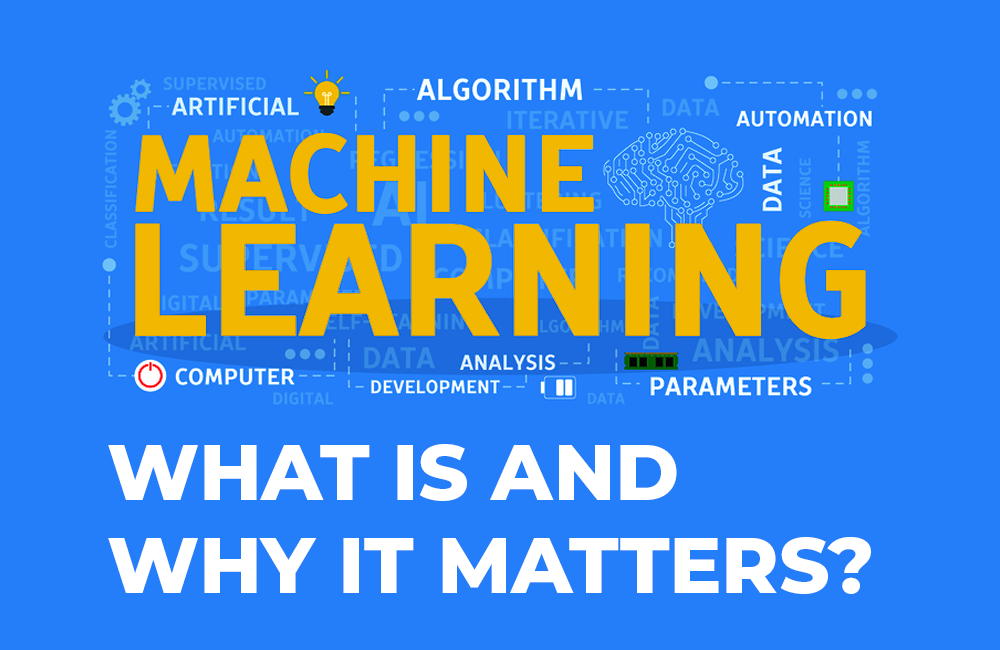MACHINE LEARNING
Machine learning is the science of getting computers to act without being explicitly programmed. In the past decade, machine learning has given us self-driving cars, practical speech recognition, effective web search, and a vastly improved understanding of the human genome. Machine learning is so pervasive today that you probably use it dozens of times a day without knowing it. Many researchers also think it is the best way to make progress towards human-level AI.
Applications of Machine Learning in day-to-day life
Unless you have been living under a rock – your life is already heavily impacted by machine learning. Let us look at a few examples where we use the outcome of machine learning already:
1. Smartphones detecting faces while taking photos or unlocking themselves
2. Facebook, LinkedIn or any other social media site recommending your friends and ads you might be interested in
3. Amazon recommending you the products based on your browsing history
4. Banks using Machine Learning to detect Fraud transactions in real-time
What are the kind of problems which can be solved using machine learning?
Machine Learning problems can be divided into 3 broad classes:
Supervised Machine Learning: When you have past data with outcomes (labels in machine learning terminology) and you want to predict the outcomes for the future – you would use Supervised Machine Learning algorithms. Supervised Machine Learning problems can again be divided into two kinds of problems:
1. Classification Problems: When you want to classify outcomes into different classes. For example – whether the floor needs cleaning/mopping is a classification problem. The outcome can fall into one of the classes – Yes or No. Similarly, whether a customer would default on their loan or not is a classification problem which is of high interest to any Bank
2. Regression Problem: When you are interested in answering how much – these problems would fall under the Regression umbrella. For example – how much cleaning needs to be done is a Regression problem. Or what is the expected amount of default from a customer is a Regression problem
Unsupervised Machine Learning: There are times when you don’t want to exactly predict an Outcome. You just want to perform a segmentation or clustering. For example – a bank would want to have a segmentation of its customers to understand their behaviour. This is an Unsupervised Machine Learning problem as we are not predicting any outcomes here.
Reinforcement Learning: Reinforcement Learning is said to be the hope of true artificial intelligence. And it is rightly said so because the potential that Reinforcement Learning possesses is immense. It is a slightly complex topic as compared to traditional machine learning but an equally crucial one for the future.
Artificial Intelligence (AI) vs. Machine Learning
Artificial Intelligence (AI) and Machine Learning (ML) are two very hot buzzwords right now, and often seem to be used interchangeably. They are not quite the same thing, but the perception that they are can sometimes lead to some confusion.
The best answer is that:
Artificial Intelligence is the broader concept of machines being able to carry out tasks in a way that we would consider "smart" and Machine Learning is a current application of AI based around the idea that we should really just be able to give machines access to data and let them learn for themselves.
As technology, and, importantly, our understanding of how our minds work, has progressed, our concept of what constitutes AI has changed. Rather than increasingly complex calculations, work in the field of AI concentrated on mimicking human decision making processes and carrying out tasks in ever more human ways.
Two important breakthroughs led to the emergence of Machine Learning as the vehicle which is driving AI development forward with the speed it currently has.
1. Rather than teaching computers everything they need to know about the world and how to carry out tasks, it might be possible to teach them to learn for themselves.
2. The emergence of the internet, and the huge increase in the amount of digital information being generated, stored, and made available for analysis.
Once these innovations were in place, engineers realized that rather than teaching computers and machines how to do everything, it would be far more efficient to code them to think like human beings, and then plug them into the internet to give them access to all of the information in the world.

Comments
Leave a comment